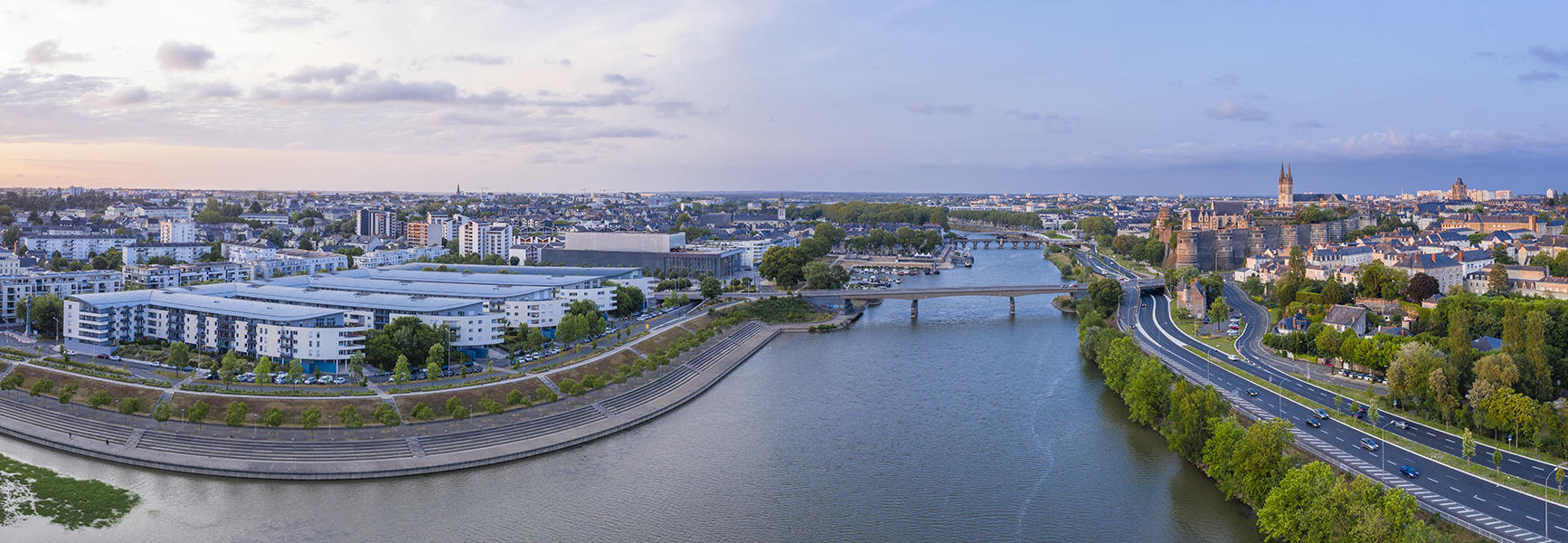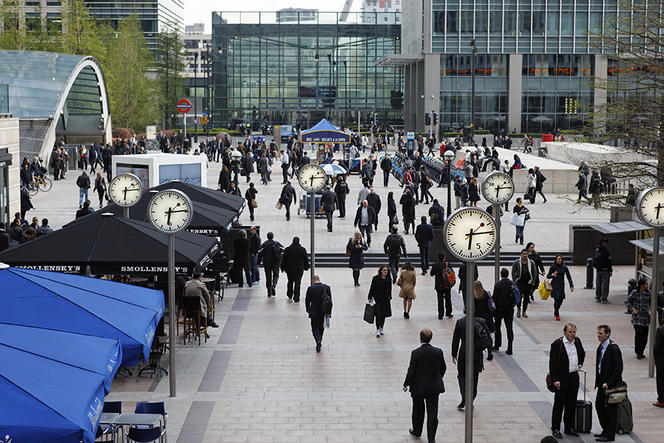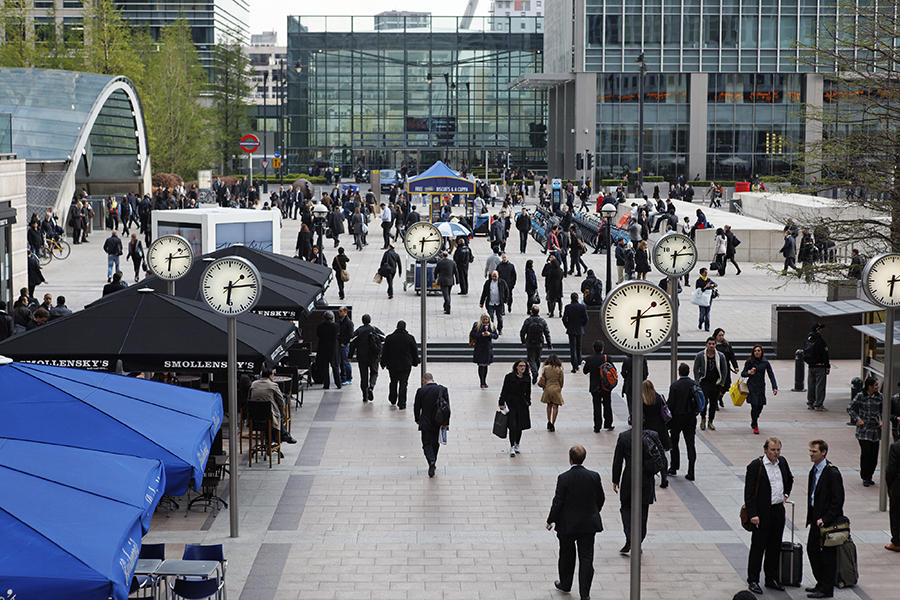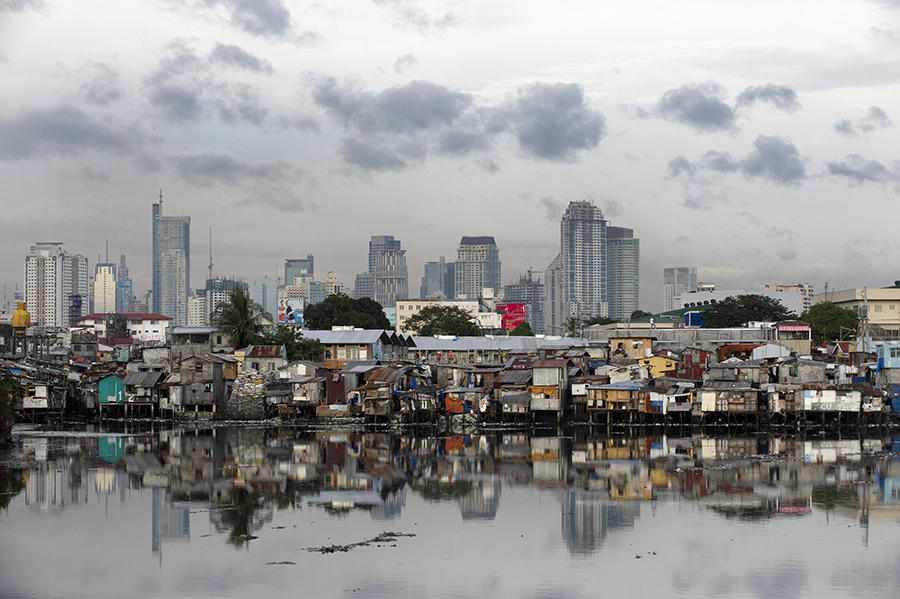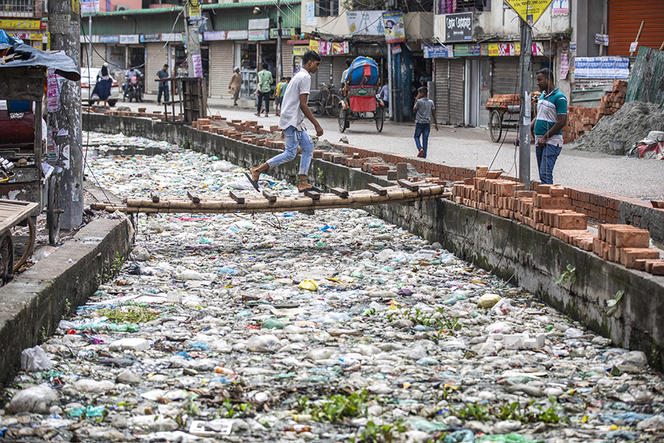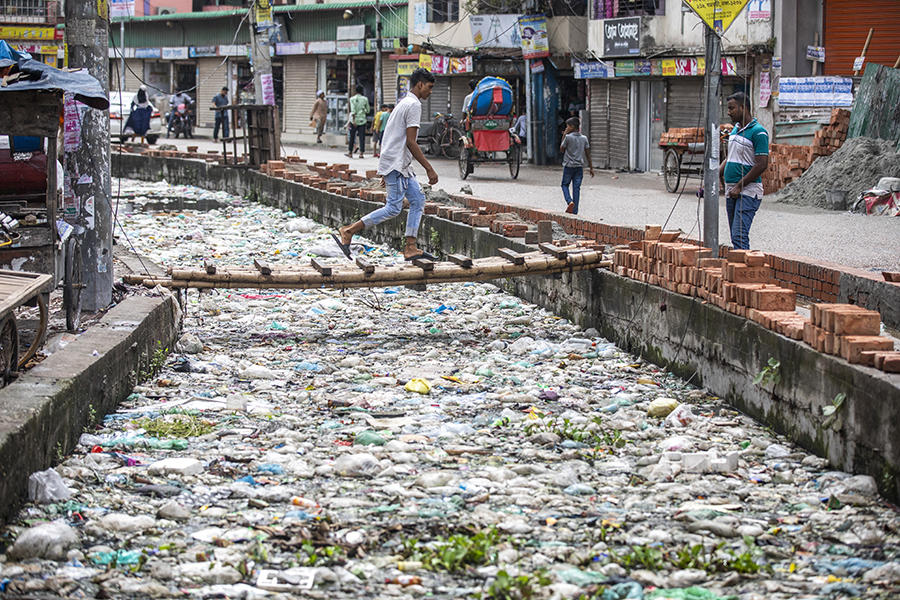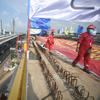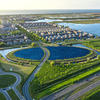You are here
Urban planet
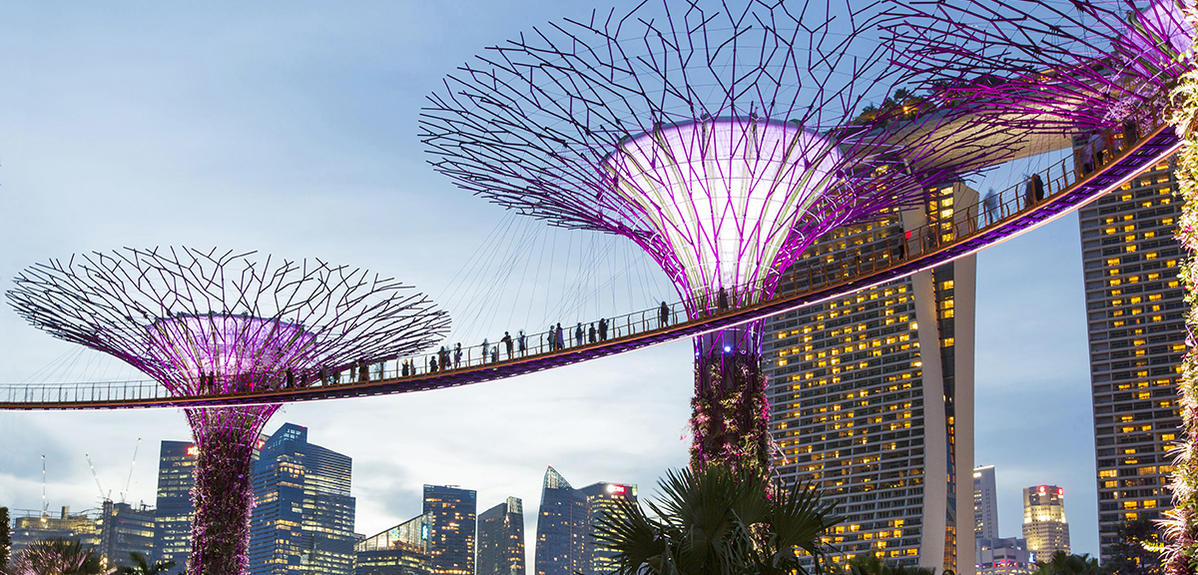
Ever since the Neolithic revolution that led to the development of the first towns several millennia before our era, humanity has kept building cities. But this technical-socio-economical phenomenon had never experienced such tremendous growth as in the 20th century, to the point that in the span of a few generations, Homo sapiens has mostly become “Homo urbanus”.
“In 1900 only one in eight people was a city dweller, even in the wake of the industrial revolution, which sparked the rapid growth of cities across Europe,” explains Michel Lussault of the Environment, City, Society (EVS) research unit.1 “In 1950, which signalled the beginning of the most powerful urbanisation phase in history, the ratio had already reached 3 out of 10. Then a decisive threshold was reached in 2008: for the first time since our species began making its mark on the planet, more than 50% of humanity – in other words at least 3.3 to 3.5 billion people – lived in urban areas.”
Far from losing momentum, the process is intensifying. According to projections by the United Nations, every region of the globe will be more urban than rural by 2030. And by 2050, nearly 75% of the estimated world population of 10 billion will be living in cities. Asia will be home to more than half of the planet’s urban dwellers and Africa one-fourth. “In 150 years (1900-2050), the world’s population will have grown about six-fold and urban communities, concentrated on 2% of the Earth’s land surface, at least 30-fold,” the researcher points out. He also stresses that one key characteristic of “post-1950 and especially post-1980 urbanisation” is “planetarisation”, primarily due to the ultra-rapid expansion of cities in China, whose rural population has dropped from 90% in the early 1980s to only 40% today.
Medium-size cities will grow into metropolises
As a result, internationalised urban centres are flourishing around the globe, subsumed in turn within megalopolises, striving to outdo one another in terms of cutting-edge architecture (with museums like the outstanding Guggenheim in Bilbao (Spain), skyscrapers, colossal stadiums…), to host major sporting and cultural events that draw hordes of tourists, to see their universities ranked among the world’s finest… But contrary to belief, urban growth “is and will remain faster in medium-sized conurbations (500,000 to 1 million inhabitants) and small cities (fewer than 500,000 inhabitants) than in those with more than 10 million residents, which account for only 9% of the worldwide urban population,” Lussault stresses.

It is obvious that widespread urbanisation has transformed and will continue to profoundly alter the way a great many humans work, eat, dress, travel… According to the geographer, “Global urbanisation leads to the replacement of traditional modes of land use and social organisation, often dating back centuries, by radically new models. Once we become city dwellers, we are no longer the same. More importantly, the urbanised, mobile, connected world that has emerged in the past few decades as the new standard for how humans live on Earth affects nearly everyone. Rural life and rurality still exist, of course, but the practices and values induced by urbanisation are forever gaining ground in spaces that were once exclusively rural. Wherever they are, all or nearly all Earthlings live an urban life – for better or for worse.”
For worse in this case, since urbanisation – a symbol of the uncontrolled production of manufactured goods, the unrelenting extraction of natural resources, the emission of pollutants and wastes (plastics, among others) – constitutes one of the vectors, if not “the main vector of the global warming that is now affecting the planet’s biophysical functions”, Lussault notes. “In other words, the Anthropocene could rightly be called the ‘Urbanocene’.”
Economic epicentres
Massive, fast-paced, unstoppable, the success of cities around the world can be explained by a few simple factors. First of all, an urban system by definition implies easy access to running water, electricity, education, healthcare, public services, public goods, commercial infrastructures, etc., as well as the possibility of emancipation and social betterment, higher income, longer life expectancy (in certain countries), a living laboratory for all manner of experiments… According to an old German say, “The city air will set you free”. It still holds true today: for many rural residents, urban life is socially and culturally attractive.
In addition, cities are the main beneficiaries of the capitalist transformations fuelled by the GAFAM companies (Google, Apple, Facebook, Amazon and Microsoft, plus Netflix), the biotech sector, big data, platforms like Uber and Airbnb… “These globalised activities based on the most advanced technologies and relying on a highly-skilled workforce are a huge presence in metropolises, making them the epicentre of the most profitable economic markets,” explains Patrick Le Galès of the Centre for European Studies and Comparative Politics.2
“The city is a magnet for talent and investment, stimulating the production and accumulation of wealth,” Le Galès adds. “It provides the best levels of productivity, gathering high concentrations of corporate headquarters, not to mention that an increasing number of large companies (in fields like telecommunications, construction, etc.) specialise in urban markets. In short, the economy has become fundamentally urban.” In fact, the 600 largest conurbations are already generating more than 60% of the world’s gross domestic product (GDP).
A growing political force
Cities are also gaining ground in terms of political influence. Organisations like the European Metropolitan Authorities, a forum founded in 2015 that brings decision-makers from major European urban centres together every year to discuss the governance of these behemoths, and the highly dynamic C40, which since 2005 has united dozens of the world’s largest cities to help in the fight against climate change, have emerged as key geopolitical forces, rivalling national governments and even claiming the right to challenge their authority. In relation to networks of urban governments structured on a worldwide scale, “national administrations remain powerful but are less and less capable of exerting authority throughout their entire territory,” Le Galès observes. “We now hear about the ‘denationalisation’ of political power.”
Still, the mega-rich metropolises, and a host of others further down the scale, are far from idyllic. Overwhelming, polluted expanses of concrete, “at the outset of the 21st century, big cities are both the leaders and the targets of global development”, Le Galès notes. All are faced, to varying degrees, with the same problems.
Cities are giants with feet of clay – they all suffer from the same weaknesses that could ultimately make them less attractive: high crime rates, bad air quality (urban areas are responsible for 70% of all greenhouse gas emissions), risks due to rising temperatures and sea levels, to technological accidents and long-term systemic crises like COVID-19, ever-higher real-estate prices, insufficient maintenance of constantly expanding infrastructures, extremist movements challenging the cosmopolitan nature of urban life…

“Cities also have the highest concentrations of shantytowns,” Le Galès stresses. “Inequalities are more visible there because the richest and poorest are gathered together. These differences are most severe in poor, fast-growing megacities, but this situation could evolve over time. In wealthy cities where growth is slower, the national or local governments can take action to reduce discriminations (social housing, public services, redistribution…). On the whole, urban centres are still dynamic hubs for social mobility, although it sometimes takes more than one generation, and they also exclude certain groups.”
Ethical, safe, breathable… The urban space will become more hospitable and user-friendly when it succeeds in balancing economic with environmental and social considerations. This means, among other things, favouring high-density housing, repositioning the car as one mobility option among many, promoting the creation of jobs and activities, encouraging the blending of social and ethnic groups and limiting ever-increasing land take.
Combating pollution and land take
Cities have a tendency to spread out, spilling over into neighbouring communities, annexing the surrounding countryside. “Their foothold (housing, businesses, warehouses, shops, transportation networks, parking lots) is growing, and needs to be limited by applying the ‘ARC’ principle: avoid, reduce, compensate,” says Béatrice Béchet, a researcher at Université Gustave Eiffel and director of the IRSTV.3 “An estimated 10% of the land in France is artificialised. The more waterproof the surfaces, the greater the impact on the biodiversity of natural environments, including the soil, and the more disrupted the water cycle. This heightens the risk of flooding during periods of heavy rain. In addition, urban mineral surfaces absorb more sunlight than natural ones, which contributes to the formation of heat islands. These store up thermal energy, which increases the surface temperature and consequently that of the surrounding air. That’s why it’s so important to make the issue of soil functions a central part of any urban planning project from the onset.”
Another challenge to be met for preserving the multifunctionality of urban soils is to control or reduce their levels of pollutants, especially given that “metal contaminants (lead, zinc, copper, arsenic, mercury, etc.) never break down and are mostly concentrated in the first few metres of subsoil”, Béchet points out. “On the other hand, organic pollutants (chlorinated substances, hydrocarbons, plant treatments, etc.) can break down, in certain cases, but often migrate to the ground water.”
Many more guiding principles need to be adopted by urban planners and other executives in order to address the chronic mismanagement of urban spaces. According to Sandrine Glatron, a researcher at the LinCS4 and director of the ZAEU environmental observatory in Strasbourg (northeastern France), “It’s important to find solutions for reducing the exposure of urban populations to air pollution, both outdoors and indoors (homes, public transport, workplaces, leisure and commercial spaces), where city dwellers spend more than 80% of their time. Similarly, a city that seeks to be ‘multispecific’ (conducive to the installation and sustained presence of multiple animal and plant species) needs to think about how humans coexist with non-humans, in particular by favouring demineralised spaces where soil fauna and vegetation can develop.”
It is equally important to convert derelict industrial sites into ecological compensation areas and set land aside for communal gardens, which provide a fertile ground for sociability, solidarity, connections with nature and environmental education. Cities also need to “step up the creation of short supply channels, reduce waste of energy and space through new forms of sharing, recycling, composting and the reuse of biomass from sewage sludge”, Glatron adds. “Examining the new forms that urban spaces need to take presupposes making the citizenry part of the process, involving them as much as possible in the co-construction and/or co-management of their living spaces.”
Prediction is a difficult art, but, as Le Galès points out, “Major metropolitan areas will no doubt experience a decline due to the climate crisis, in particular those – and there are many – in coastal areas. Demographers foresee ongoing urbanisation and the development of megacities in Asia and Africa until the end of the century, but the intensification of global warming and the proliferation of natural catastrophes could change the situation drastically if access to food, water, energy, etc. were to be impeded. A rebalancing in favour of medium-sized cities is underway. In France, as the national statistics institute INSEE has reported, sizeable numbers of people are leaving metropolitan areas for smaller cities and towns. Will the next few decades see a reversal, ending the supremacy of large cities as the hotbeds of development? It will all depend on where coming generations choose to live.”
_________________________________________________________________________
Research for a sustainable city
To promote the emergence of new ways to plan, build and manage cities: this is the goal of a priority research programme and infrastructure (PEPR) devoted to sustainable cities and innovative buildings, funded by the France 2030 investment plan and codirected by the CNRS and Université Gustave Eiffel, near Paris. “Given the ever-greater role played by cities in our country’s land use, the purpose of this project, endowed with a budget of €40 million and ultimately seeking to serve as a driver for a similar initiative on a Europe-wide scale, is to investigate possible scientific solutions for maintaining liveable urban environments while minimising their impact on the planet,” explains Gilles Gesquière of the LIRIS,5 who co-directs the programme with EVS researcher Jean-Yves Toussaint. Which disciplines will be called into play, to brainstorm over the next eight years on issues such as the protection of urban biodiversity, the prevention of natural and anthropogenic hazards, the design of efficient, low-consumption buildings, the emergence of inclusive, ethical cities, and the health and well-being of city dwellers? The answer is: all of them, from fluid mechanics to sociology to chemistry, construction-engineering, economics, geography, biology, hydrology… “Developing a sustainable city is a complex task that requires a pluridisciplinary approach anchored in real-life situations,” Gesquière emphasises. This approach is exemplified by the CNRS, which has made “Territories of the Future” one of the six major societal challenges that are mobilising all ten of its institutes.
In close cooperation with elected officials, civic groups, industry and the tertiary sector, united in a board of stakeholders, the PEPR aims to “promote the exercise of scientific plurality, placing the laboratories not in competition but in concordance with one another”, Toussaint adds. “One of our objectives is to draw inspiration from the extraordinary body of technical solutions implemented by previous generations for withstanding severe climatic conditions (cold spells, storms, torrential rain, heat waves, etc.). The idea is to scientifically improve these empirical processes, these often very simple solutions that make it possible to do a lot with a little.” These laudable efforts should soon spawn a bountiful harvest of PhDs –in every field!
- 1. CNRS / ENTPE / ENSA Lyon / ENS Lyon / Université Jean Monnet / Université Lumière Lyon 2 / Université Jean Moulin Lyon 3.
- 2. CNRS / Sciences Po Paris.
- 3. Institut de Recherche en Sciences et Techniques de la Ville (CNRS / BRGM / CEREMA / CSTB / CNAM / École Centrale de Nantes / IMT Atlantique / Oniris Nantes-Atlantique / Institut Agro / ENSA Nantes / INRAE / Air Pays de la Loire / La Rochelle Université / Le Mans Université / Nantes Université / Université d’Angers / Université de Caen Normandie / Université Gustave Eiffel.
- 4. Laboratoire Interdisciplinaire en Études Culturelles (CNRS / Université de Strasbourg).
- 5. Laboratoire d’Informatique en Image et Systèmes d’Information (CNRS / INSA Lyon / Université Claude Bernard Lyon 1).
Explore more
Author
Philippe Testard-Vaillant is a journalist. He lives and works in south-eastern France. He has also authored and co-authored several books, including Le Guide du Paris savant (Paris: Belin) and Mon corps, la première merveille du monde (Paris: JC Lattès).



